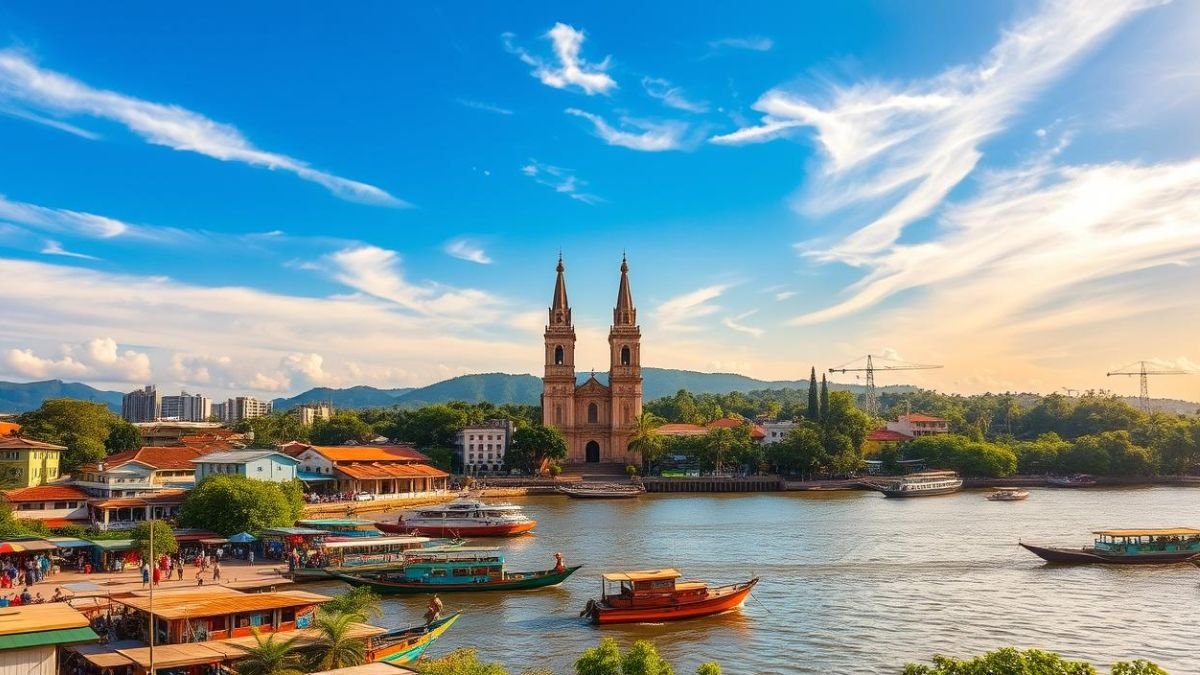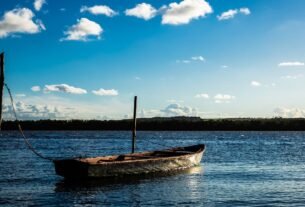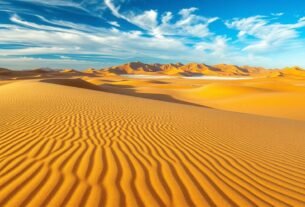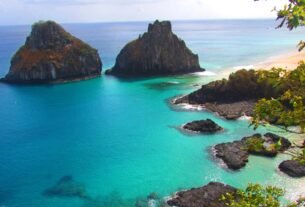Introduction
Have you ever stood in two hemispheres at once? In Macapá Brazil, the only capital in the world split by the equator, you can do just that. This unique city blends geography, history, and adventure like nowhere else. Standing on the equator is not just a novelty; it offers a rare opportunity to appreciate the planet’s geographical wonders.
Here, you can feel the pull of the Earth’s rotation and witness the fascinating effects of being in both the Northern and Southern Hemispheres simultaneously. The experience of straddling this invisible line is enhanced by local attractions that celebrate this unique geographical feature, making it a must-visit destination for those seeking both fun and education.
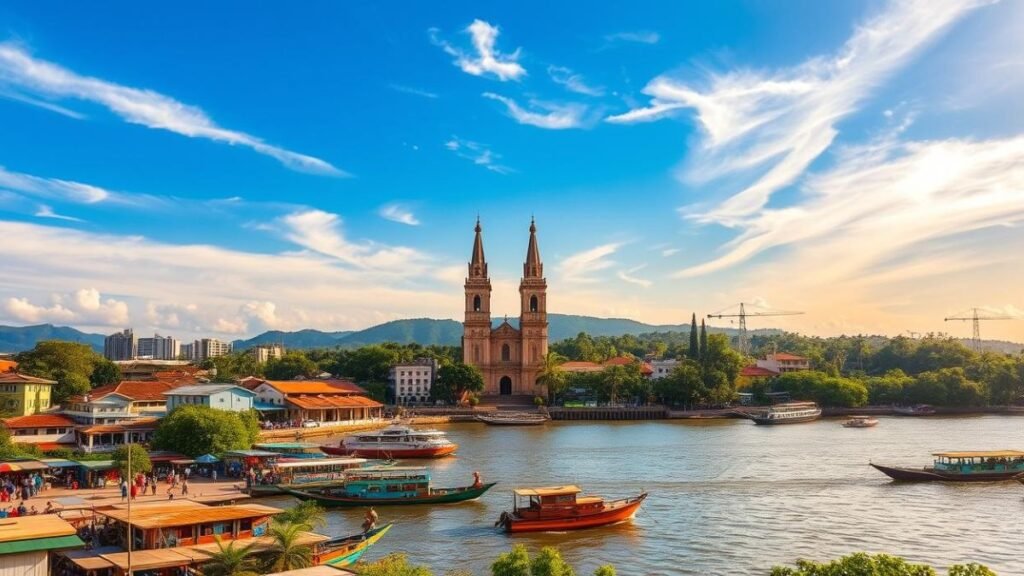
Located in the northern state of Amapá, this region serves as a gateway to the Amazon. Its isolation, accessible mainly by boat or plane, adds to its mystique and allure, making it a destination for adventurous travelers seeking to explore the heart of the Amazon rainforest.
Founded in 1758, it’s rich in colonial history and surrounded by lush rainforests that teem with diverse wildlife and vibrant ecosystems. The city’s unique position also influences its culture, as it serves as a melting pot of indigenous and colonial influences. Visitors can immerse themselves in the local traditions, enjoy the rich culinary offerings, and participate in vibrant festivals that showcase the area’s heritage.
With a tropical monsoon climate, expect warm temperatures and heavy rainfall, which contribute to the area’s lush greenery and vibrant flora. Yet, its cultural vibrancy and equatorial landmarks make it unforgettable, with festivals and local traditions that reflect the spirit of the region. The city’s markets are filled with colorful handicrafts and fresh produce, and the lively music scene invites you to dance to the rhythms of the Amazon. Ready to explore more?
Key Takeaways
- Macapá Brazil is the only capital city directly on the equator.
- Accessible primarily by air or water due to its remote location.
- Rich in colonial history, dating back to 1758.
- Features a tropical monsoon climate with high rainfall.
- Serves as a strategic gateway to the Amazon rainforest.
1. Macapá Brazil: The Capital of the Middle of the World
The equator isn’t just a line on a map here; it’s a tangible experience. This city is one of the few places where you can physically stand on the dividing line between hemispheres, allowing visitors to engage in a unique geographical adventure.
Standing on the equator, you can feel the remarkable balance of nature, where day and night are nearly equal in length throughout the year. Its nickname, “The Capital of the Middle of the World,” isn’t just poetic; it’s scientifically precise, highlighting the city’s role as a geographical and cultural crossroads that attracts travelers from around the globe.
Here, you can witness firsthand how this extraordinary line influences local customs, celebrations, and even the rhythm of life, making Macapá a fascinating destination for those eager to explore the wonders of the equatorial experience.
The Equator Runs Right Through the City
Geographic coordinates place the equator slicing through the heart of the urban area, creating a unique geographical phenomenon that captivates both locals and tourists alike. This line divides the world into northern and southern hemispheres and serves as a cultural symbol for the city, representing the blending of diverse traditions and customs.
Landmarks like Zerão Stadium’s midfield line align exactly with this invisible divide, making it a popular spot for sports enthusiasts and visitors eager to experience this geographical marvel. Soccer matches here literally span two halves of the planet, where players and fans celebrate the unity and diversity of the world in a single game.
The excitement of being in two hemispheres at once adds an extraordinary layer to the local sports culture, attracting teams and fans from across the globe. In addition to soccer, the equator inspires various local festivals and events that showcase the rich cultural heritage of Macapá, where music, dance, and culinary delights come together to celebrate this unique geographical identity.
Visitors often leave with a deeper appreciation for how the equator influences not just the landscape but the very fabric of life in this vibrant city.
Marco Zero Monument: Standing in Two Hemispheres at Once
The iconic Marco Zero monument marks the equatorial line with a grand plaza that draws countless visitors from around the world, each eager to experience the magic of this geographical wonder. This remarkable structure serves as a geographical marker as a celebration of the unique experience of standing in two hemispheres at once, an opportunity that few places on Earth can offer.
Visitors pose with one foot in each hemisphere, capturing a photo op unlike any other that captures the essence of this extraordinary location and the joy of being in two places at once.
Its Avenue Equatorial aligns perfectly with sunrise during equinoxes, creating a golden path of light that bathes the plaza in a warm glow, symbolizing the harmony between the northern and southern worlds.
This alignment is not just a spectacle; it represents the convergence of cultures and ideas that the equator embodies. The monument is often surrounded by enthusiastic tourists and locals alike, all eager to engage with this cultural landmark and share their experiences through photographs and stories, each adding their own narrative to the rich tapestry of this site.
The atmosphere is filled with laughter, excitement, and a sense of wonder, making it a truly unforgettable experience for everyone who visits.
Unique Solar Phenomena During Equinoxes
Twice a year, shadows vanish at noon as the sun sits directly overhead, creating a remarkable phenomenon known as the zero-shadow effect. This extraordinary event draws scientists, photographers, and tourists alike, all eager to witness this fleeting moment when no shadows are cast, making it a unique spectacle.
Local festivals celebrate these events with vibrant cultural performances, educational astronomy workshops, and engaging activities that invite everyone to explore the wonders of the cosmos.
| Event | Date | Highlights |
|---|---|---|
| March Equinox | ~March 20 | Sunrise aligns perfectly with Marco Zero’s avenue, illuminating the path and creating a breathtaking visual experience for all. |
| September Equinox | ~September 22 | Noon shadow disappearance occurs, captivating visitors who gather to marvel at this rare occurrence. |
From solar rituals that honor the sun’s journey to soccer matches played on the equator, this city transforms geography into an unforgettable adventure. It’s a rare blend of science, culture, and sheer wonder, inviting everyone to engage with the natural world in a way that is both enlightening and entertaining.
2. Rich History and Cultural Heritage
Step into a city where history echoes through colonial walls and indigenous roots run deep. From the imposing Fortaleza de São José, a fortress that stands as a testament to the strategic military architecture of its time, to the whispers of Tupi tribes, whose rich traditions and stories have shaped the cultural landscape, every corner tells a story. This city showcases the remnants of colonial power and celebrates the resilience of its indigenous peoples, whose legacy continues to influence the vibrant culture found here today.
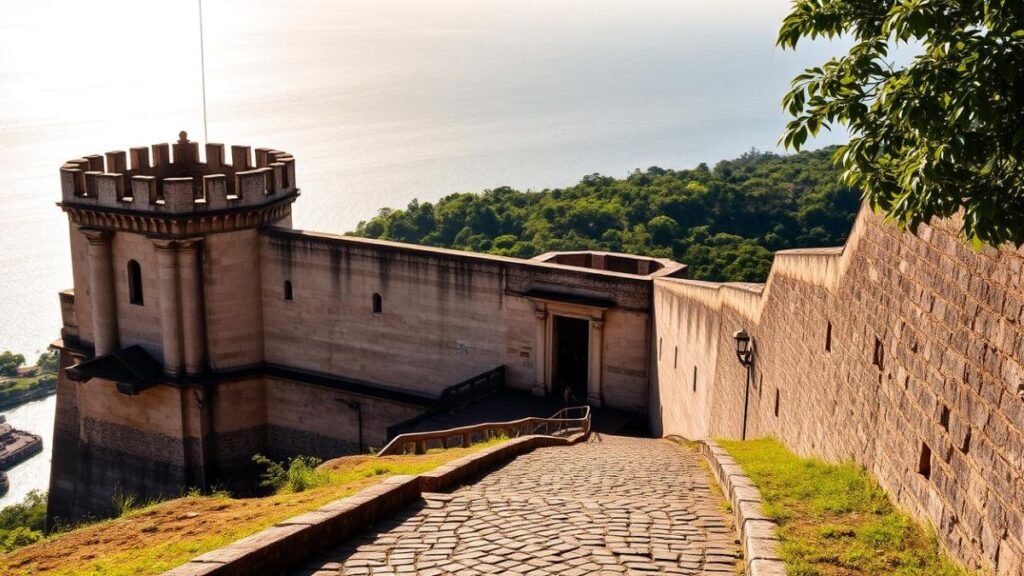
Fortaleza de São José: A Colonial Gem
Built between 1764 and 1782, the Fortaleza de São José is a Vauban-style masterpiece, a stunning example of military architecture that showcases the ingenuity of its creators.
Enslaved Africans and Indigenous workers, whose labor was pivotal to its construction, dedicated their skills to build this fortress to guard the Amazon Delta from invaders, ensuring the protection of both the land and its people.
This architectural marvel served as a military stronghold, symbolizing resistance and resilience, and reflecting the complex history of colonization in the region and the struggles faced by its inhabitants.
Today, its star-shaped walls and cannons face the river, a silent sentinel of the past, standing firm against the passage of time. Visitors can explore its ramparts and learn about the strategic importance it held during various conflicts, where battles were fought not just for land but for the very essence of cultural identity.
Nominated for UNESCO status, it’s the city’s top tourist attraction, drawing history enthusiasts and tourists alike who are eager to immerse themselves in the rich narrative of Macapá, discovering the layers of history that are etched into every stone and corner of this magnificent fortress.
The Origins of Macapá: From Indigenous Roots to Portuguese Settlement
Long before Portuguese arrival, the Tupi people called this place “Macapaba”, meaning “land of many bacabas” (a palm fruit). This name reflects the natural resources available and the deep connection the Tupi had with their environment, relying on the rich biodiversity for sustenance and cultural practices.
The 18th century transformed it into a military outpost, blending cultures and conflicts as European powers vied for control over the lucrative trade routes and resources of the Amazon Basin.
- 1811 hurricane: Leveled buildings but strengthened community ties, as residents banded together to rebuild their homes and lives, fostering a sense of unity and resilience that would define the spirit of Macapá.
- 1834 floods: Reshaped the urban layout, inspiring new infrastructure, as the city adapted to the challenges posed by its natural environment, leading to innovative engineering solutions and a reimagining of urban planning that would accommodate future growth and development.
Macapá’s Nickname: “The Capital of the Middle of the World”
This title isn’t just geographic, it’s a branding triumph that encapsulates the very essence of Macapá. Tourism campaigns highlight the equatorial line, drawing visitors eager to straddle hemispheres and experience the unique charm of a city that lies at the center of the Earth.
The allure of standing on the equator attracts adventure seekers and those interested in the rich cultural tapestry that defines this region. The city’s strategic location has historically made it a melting pot of cultures, where indigenous traditions blend seamlessly with influences from European colonizers and African heritage.
Even the 2001 tragedy, the murder of yachtsman Peter Blake, couldn’t overshadow the city’s resilient spirit, which has been forged through centuries of cultural exchange and adaptation, showcasing the strength and unity of its people in the face of adversity.
The local community continues to celebrate its diverse heritage through vibrant festivals and events, reflecting a profound sense of identity and pride that further enriches the experience for both residents and visitors alike.
3. Unique Geographical and Natural Wonders
Nature’s power takes center stage in this equatorial wonderland. The Amazon River carves through the region, shaping landscapes and livelihoods. This majestic river, often referred to as the lifeblood of the Amazon rainforest, is not just a geographical feature but a vital artery for the local ecosystem. It supports an incredible diversity of flora and fauna, making it one of the most biodiverse areas on the planet.
From tidal spectacles to wildlife havens, this is where adventure meets conservation. The river’s intricate network of tributaries creates a mosaic of habitats, attracting researchers and nature enthusiasts alike, eager to explore its depths and witness the vibrant life it sustains.
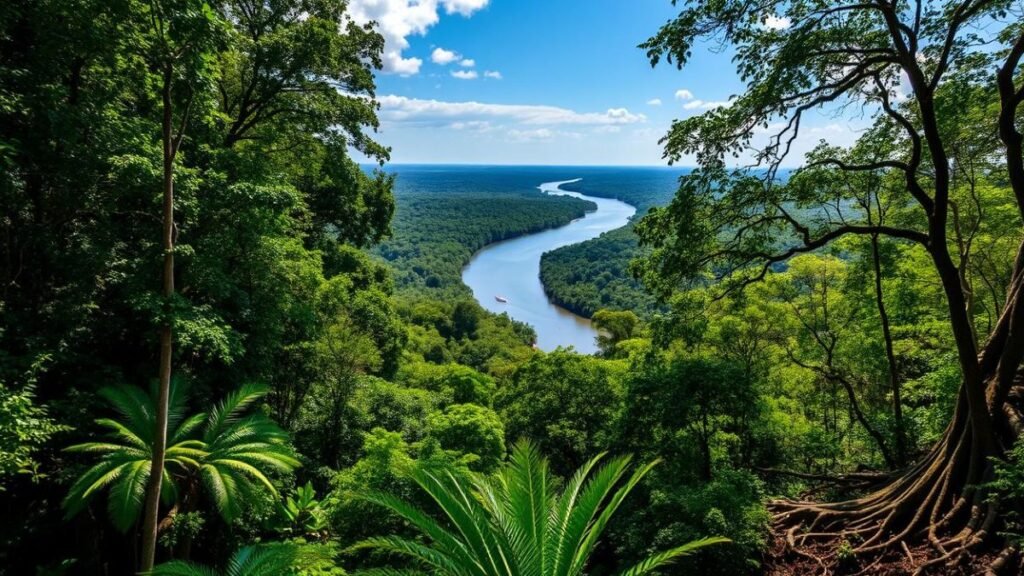
The Amazon River and Its Influence
The Amazon River fuels the city’s economy, enabling timber and mineral exports that are crucial for both local livelihoods and the broader Brazilian economy. Its extensive waterways serve as vital highways, connecting remote communities that rely on the river for transportation and trade.
Annual floods deposit nutrient-rich silt along the riverbanks, sustaining agriculture and fisheries that provide food and income for thousands of families in the region. This cyclical flooding enriches the soil and creates ideal conditions for diverse crops, which are essential for food security.
Nearby, the Marajó Archipelago showcases the river’s might and its ecological importance. As the world’s largest fluvial island system, it hosts an astonishing variety of wildlife, including scarlet ibises and black caimans, species also found in Macapá’s reserves.
The archipelago serves as a critical habitat for many migratory birds and other species, highlighting the interconnectedness of the river and its surrounding ecosystems. Conservation efforts in this area are vital to protect these unique habitats from the pressures of development and climate change.
Pororoca: The World’s Longest Tidal Bore
Twice daily, ocean tides clash with river currents, creating 12-foot waves. Surfers ride the Pororoca for miles, a bucket-list challenge. The phenomenon peaks during equinoxes, drawing thrill-seekers from around the world.
Biodiversity Hotspot: Home to Exotic Wildlife
The state protects 53,560 acres in the Rio Curiaú reserve. Scarlet ibises paint the skies red, while migratory flamingos wade in wetlands. Parazinho Island shelters a diverse range of rare species, including fruit bats and pink river dolphins.
- Black caimans: Lurk in oxbow lakes, apex predators of the waterways.
- Giant otters: Playful yet endangered, thriving in protected zones.
- Ecological tours: Kayak through mangroves or birdwatch at dawn.
Ecotourism thrives here, offering glimpses of untouched Amazonian ecosystems. Whether tracking wildlife or riding tidal waves, the city delivers unforgettable encounters.
4. Conclusion: Why Macapá Brazil Should Be on Your Travel List
Few places blend geography, history, and nature as seamlessly as this equatorial gem. Standing on the hemisphere divide, where the Earth’s two hemispheres meet, you can feel the unique energy of this location. Exploring colonial forts that tell tales of the past, or surfing tidal waves that crash along the shores, every moment here is unforgettable and filled with adventure.
Visit between August and November for sunny skies and lively festivals that celebrate the region’s vibrant culture. The Brazil Airpass makes hopping between northern region hubs easy and affordable, allowing travelers to experience the diverse landscapes and communities of the Amazon. Stay at riverside hotels like Amazon Plaza for stunning Amazon views, where you can wake up to the sounds of nature and enjoy breathtaking sunrises over the river.
Pack light rain gear, wet seasons bring sudden downpours that can be refreshing and unexpected. The state of Amapá is a rising star for eco-tourists and adventure seekers, offering a plethora of activities, including hiking through lush rainforests, visiting indigenous communities, and witnessing the region’s rich biodiversity. From rare wildlife to equatorial phenomena, this city offers experiences found nowhere else, making it a destination that should not be missed.
Ready to cross the equator off your bucket list? Learn more Santarém Brazil.
FAQ
What makes Macapá unique geographically?
The equator runs directly through the city, making it one of the few places where you can stand in both hemispheres at once. The Marco Zero monument marks this special location.
What historical landmarks should visitors see?
Fortaleza de São José, a well-preserved colonial fortress, is a must-visit. It showcases Portuguese military architecture and offers insights into the region’s past.
Does Macapá experience any unusual natural phenomena?
Yes! During equinoxes, the sun aligns perfectly with the equator, creating unique solar effects. The Pororoca, a powerful tidal bore, also attracts surfers and nature enthusiasts.
How does the Amazon River influence the city?
The river shapes daily life, providing transportation, fishing, and stunning waterfront views. Its presence also supports rich biodiversity in the surrounding areas.
Why is Macapá called “The Capital of the Middle of the World”?
Its position directly on the equator earned this nickname. The city celebrates its central location with notable landmarks and a variety of cultural events.
What wildlife can be found near Macapá?
The region is a biodiversity hotspot, home to exotic species such as river dolphins, colorful birds, and unique fish found in the Amazon Basin.

